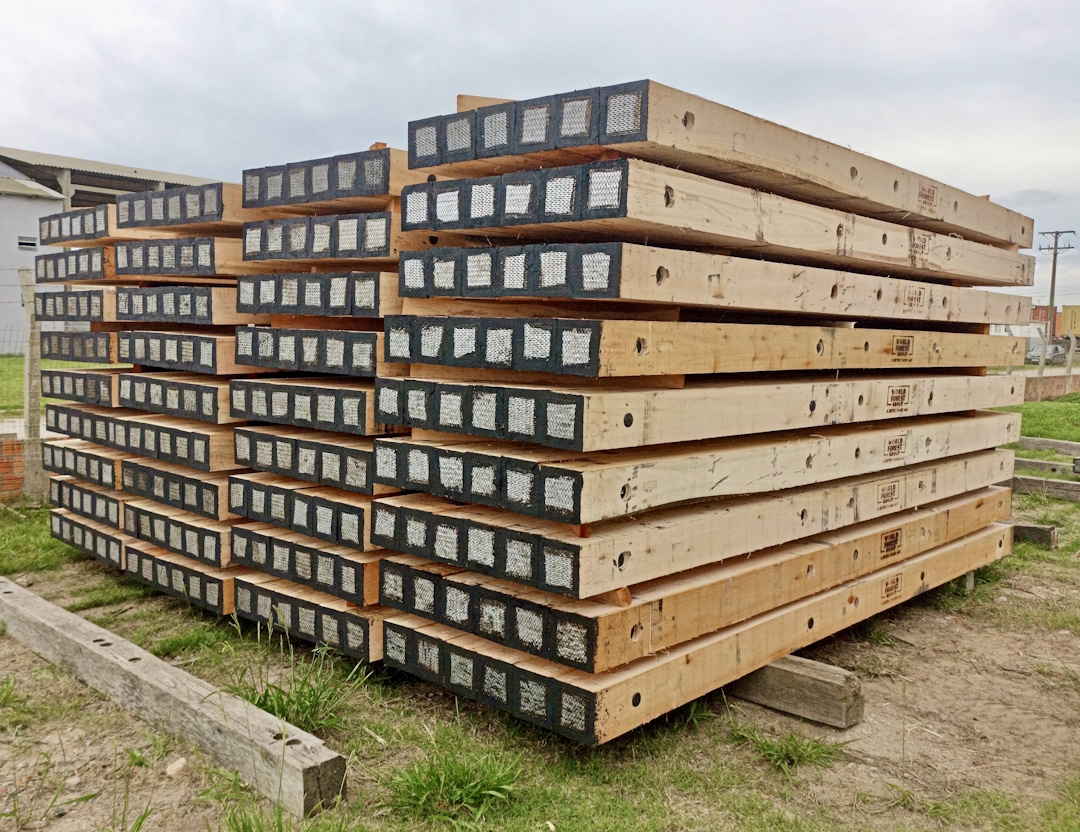Trying to balance a massive crane on soft, uneven ground is a call for disaster. Thankfully, crane mats have been saving lives by acting as a solid foundation for heavy lifting and construction projects.
However, there’s a negative aspect: traditional hardwood mats, while effective, might have some negative impacts on the environment. With the way authorities have been hammering on sustainability across industries, the search for better, greener alternatives is in full swing. From high-tech composites to responsibly sourced timber, new innovations are changing the game.
Check out how some of the next generation of crane mats are built to be both strong and sustainable.
Why Sustainable Crane Mats?
Environmental concerns are reshaping the construction and heavy equipment industries, pushing for innovations that prioritize sustainability without compromising performance. The growing demand for eco-friendly crane mats is driven by several key factors:
Deforestation and Timber Scarcity
For decades, hardwood timber, often sourced from older-growth forests, has been the go-to material for crane mats. However, widespread forest degradation and the increasing scarcity of high-quality timber have made sourcing these materials more challenging and expensive.
The depletion of these forests not only impacts biodiversity but also contributes to long-term supply chain instability. Now, companies need alternative materials that offer the same strength and reliability without environmental drawbacks.
Stricter Environmental Regulations and Corporate Sustainability Goals
Governments all around the world are making strict environmental rules to reduce deforestation and carbon emissions, compelling businesses to rethink their material choices.
Additionally, many industries use ambitious sustainability initiatives to reduce their carbon footprint.
This shift has led to a rising preference for crane mats made from renewable, recycled, or responsibly sourced materials that align with corporate ESG (Environmental, Social, and Governance) commitments.
Longevity, Durability, and Cost-Effectiveness
While traditional timber mats provide the necessary support, they degrade with time due to exposure to moisture, heavy loads, and harsh weather conditions. This deterioration results in frequent replacements, increasing costs and waste.
In contrast, sustainable alternatives, such as composite mats or engineered wood products, are designed for enhanced durability and resistance to wear and tear. Though they may have a higher initial cost, their extended lifespan translates to significant long-term savings and a lower environmental impact.
Innovations in Eco-Friendly Crane Mat Materials
1. Sustainably Sourced Timber
One of the most effective ways to improve crane mat sustainability is by ensuring timber is sourced responsibly. This method minimizes environmental harm and helps maintain a steady and ethical supply of materials.
- Sustainably Sourced Wood: Many of the wood materials used in crane mats today comes from forests managed with sustainability in mind. These forests follow practices that minimize environmental damage, support forest regeneration, and protect biodiversity. Choosing timber from responsibly managed forests helps protect the ecosystem and makes the material more sustainable.
- Eucalyptus Crane Mats: Unlike traditional hardwoods like mixed oaks, which take 80-100 years to mature, eucalyptus trees grow rapidly, sometimes reaching full maturity in just 30-40 years. This makes eucalyptus a highly renewable alternative that doesn’t deplete forests at the same rate as conventional hardwood sources. Additionally, eucalyptus is known to last long, with its natural resistance to rot, moisture and high load-bearing capacity, making it an ideal material for heavy-duty applications.
- Engineered Wood Mats: Laminated and engineered wood products are designed to optimize material use while enhancing strength and durability. These options reduce overall waste and promote sustainable forestry practices by utilizing smaller wood fibers and binding them into high-performance mats.
2. Composite Crane Mats
Composite materials have revolutionized the crane mat industry by offering a more durable and environmentally friendly alternative to traditional timber. These mats are typically made from recycled plastics, fiberglass, and high-density polyethylene (HDPE), providing several key advantages:
- Extended Lifespan: Unlike wood, composite mats are highly resistant to rot, moisture, and extreme weather conditions. This significantly extends their usability, reducing constant replacements thereby reducing long-term costs.
- Lightweight Yet Strong: Despite their impressive load-bearing capacity, composite mats are often lighter than hardwood alternatives. This makes transportation and handling easier, reducing fuel consumption and overall logistical expenses.
- Recyclability: Many composite mats are manufactured using recycled materials, which can be completely recycled at the end of their lifespan. This closed-loop system decreases waste sent to landfills and promotes a more sustainable economy.
- Consistent Performance: Unlike natural wood, which can splinter, crack, or degrade over time, composite materials maintain a uniform structure and performance level, providing greater reliability in demanding job site conditions.
3. Rubber and Recycled Materials
In addition to composites, manufacturers are exploring innovative solutions that incorporate rubber and other recycled materials to enhance sustainability and functionality.
- Recycled Tire Mats: By repurposing rubber from discarded tires, these mats offer superior shock absorption and ground protection. This way, they are useful for sensitive environments where reducing ground pressure and preventing soil disturbance is critical.
- Hybrid Mats: Some manufacturers mix wood with recycled plastic or rubber, creating hybrid mats that offer improved durability, flexibility, and affordability. These mats take advantage of wood’s structural strength while benefiting from recycled materials’ weather-resistant and shock-absorbing properties.
- Bio-Based Resins: Recent advancements in biopolymers and plant-based resins have led to the development of crane mats that reduce dependence on fossil fuels. By incorporating resins derived from natural sources, these innovations make composite mats even more eco-friendly while maintaining high strength and durability.
Advantages of Sustainable Crane Mat Alternatives
Environmental Benefits
Sustainable crane mats help reduce deforestation, industrial waste, and carbon emissions.
By incorporating responsibly sourced timber, recycled plastics, or composite materials, manufacturers help protect fragile ecosystems and promote more responsible resource management.
These eco-friendly alternatives also contribute to a circular economy, where materials are reused and repurposed instead of being discarded, significantly decreasing the environmental footprint of construction and heavy equipment operations.
Long-Term Cost Savings
While the initial investment in sustainable crane mats, particularly composite and engineered wood options, may be higher than traditional hardwood mats, their superior longevity and reduced maintenance requirements translate to substantial cost savings.
Unlike timber mats, which are susceptible to moisture damage, rotting, and splintering, modern alternatives offer outstanding durability, resistance to unfavorable weather conditions, and an extended lifespan. Fewer replacements and repairs mean lower operational costs, making these mats a financially sound investment for businesses focused on long-term efficiency.
Better Performance and Safety
Innovative materials such as high-density polyethylene (HDPE) and engineered wood offer enhanced load-bearing strength, flexibility, and weather resistance compared to traditional hardwood mats.
These advancements improve overall job site safety by reducing splintering, warping, and material failure risks under heavy loads. Additionally, lightweight composite options make transportation and installation safer and more efficient, reducing the risk of workplace injuries and streamlining logistics for large-scale projects.
Regulatory Compliance and Corporate Sustainability
With environmental regulations becoming tougher, adopting sustainable crane mats helps companies meet compliance standards while aligning with corporate social responsibility (CSR) goals.
Many industries, especially construction, energy, and infrastructure, are being pressed to lessen their carbon footprint and adopt environmentally friendly practices. Businesses prioritizing sustainability give them a competitive edge, attracting clients who value green building certifications, responsible sourcing, and environmentally friendly operations.
Moreover, demonstrating a commitment to sustainability enhances brand reputation and stakeholder trust, opening doors to more lucrative partnerships and government contracts.
Conclusion
The construction and heavy equipment industries increasingly prioritize sustainability, and crane mat manufacturers are following suit by developing eco-friendly alternatives.
As regulatory requirements evolve and corporate sustainability becomes a top priority, adopting sustainable crane mats will no longer be a niche practice but a standard industry expectation
Companies that invest in these innovations today will enhance operational efficiency and safety and contribute to a greener, more responsible future for the industry.


